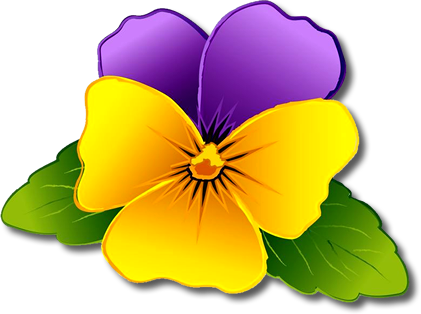
15 San Antonio Botanical Garden
October 16, 2020
17 Nursery Dreams
November 6, 2020Container Gardening, Part 2: Plants
O h where do I begin?! Did I mention I love love love container gardening?!
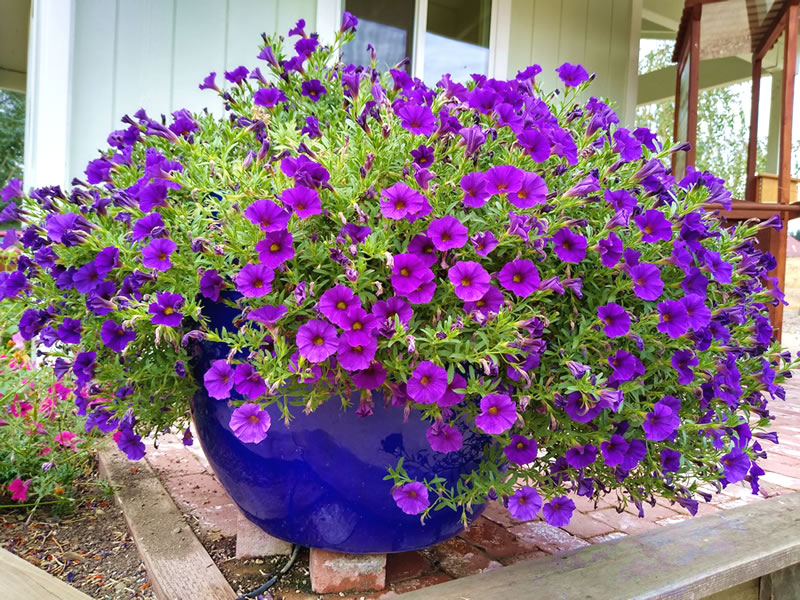
Calibrachoa hybrida ‘Cabaret Purple.’ Container $60, plant $6.95, soil $12. Priceless!
It is an art to pick the right plant for a container. Sometimes it works and sometimes it doesn’t. That’s the ART of it! LOL!
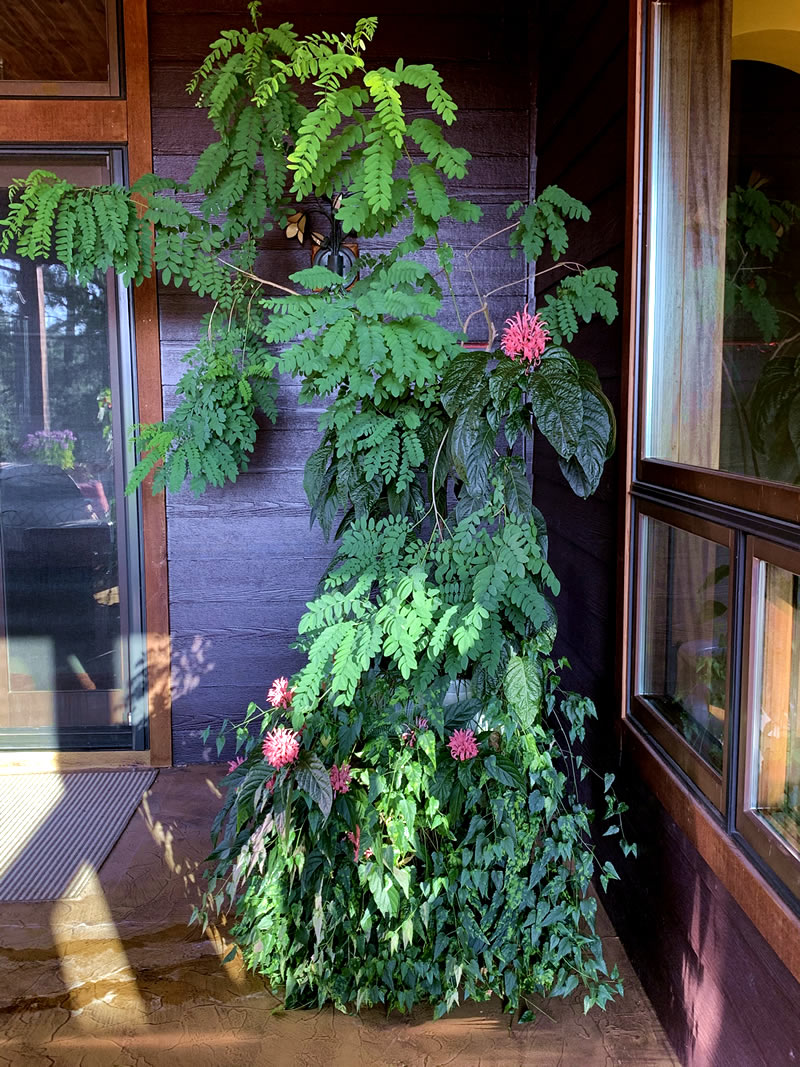
Amorpha fruticosa (Desert False Indigo), Justicia carnea (Brazilian Plume),
Abutilon megapotamicum ‘Variegatum’ (Trailing Abutilon) in a container, 30-inches tall by 18-inches wide.
I grew this Amorpha tree from seed in 2014. I chose it for this container because it grows only 10 to 12-feet tall. Since it has no foliage on the bottom third, I added the Justicia as a filler.
I bought the spiller, Abutilon, at Marbotts Nursery in Portland, Oregon, which is located in an industrial area on the "other side of the tracks" and which Aunt Patti and I were only able to find after thinking we were lost—per usual—until I made a U-turn—per usual—to backtrack.
I have never seen this Abutilon in any other of the 280-plus nurseries I have visited. In fact in 2019 we went back to Marbotts, and Aunt Patti bought this same plant because she had killed the one I propagated for her (sigh).
One of my #1 pet peeves (by now you know I have many) is those gardening magazines that show totally unrealistic pictures of plants in containers. For example, showing a full-sun plant in the same container with a full-shade plant. Or a tree looking sooooooo cute in that little one-gallon container but that wants to grow to 30 feet at maturity. Of course it would never get to 30 feet—no room for its roots—and would have to be taken out eventually and put in the ground or be throttled to death.
Good lessons from bad photos: 1) Plants with like growing conditions (sunlight, water, temperature) can go in the same container. 2) Some plants can't sustain life over time in a container. Trust me. You might think that plant looks healthy, but it ain’t!
Here's an example of good companion plants in the right size container.

Cordyline australis ‘Torbay Dazzler’, Sedum palmeri. By Aunt Patti.
Back in my stupid days, I never thought reasonably about plant size when choosing perennials for containers. After 3 years they always outgrew their pots, making me overexert myself, take a knife, a shovel, or a chain saw to get the damn plant out. I did this so many times, I stopped keeping count.
You can tell a plant has outgrown its container simply by the sight of it. The center will die back or the whole thing starts wilting and looking sad. Roots escape at the surface or through the holes at the bottom and into the ground. The plant stops producing blossoms. Water drains too fast or doesn’t drain at all because roots have clogged the drainage holes. (Oh, it's fun when the thing gets all stinky like rotting fish!)

Hibiscus rosa-sinensis (Tropical Hibiscus)
I used to figure dealing with overgrown plants is just the way it is with containers. NOT! Now, like this Tropical Hibiscus, my go-to size for perennials is a max growth of 1 to 3-feet tall and wide. Of course it does depend on the container size, but 1 to 3-foot plants is good for starters.
An easy way to choose plants for containers is to buy those that are in 4-inch pots or 6-packs. These tend to be annuals or small perennials that often work perfectly in containers.
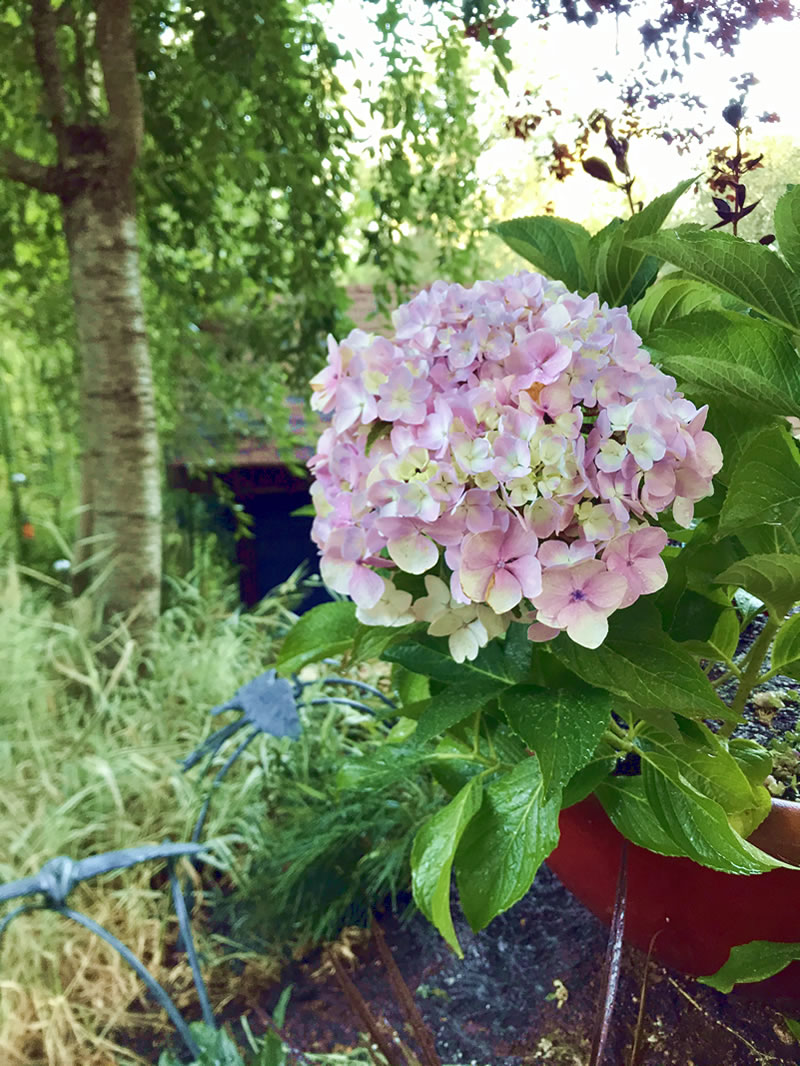
Hydrangea macrophylla 'Big Daddy'
Also before buying a container plant, I think about whether to let the shape and color of the container be the "star" or to let the plant be the main focus. Do I want the eye drawn to the beauty of the container, to the plant or to both. For instance, Big Daddy above is stunning! He's the "star" and the container plays a supporting role.
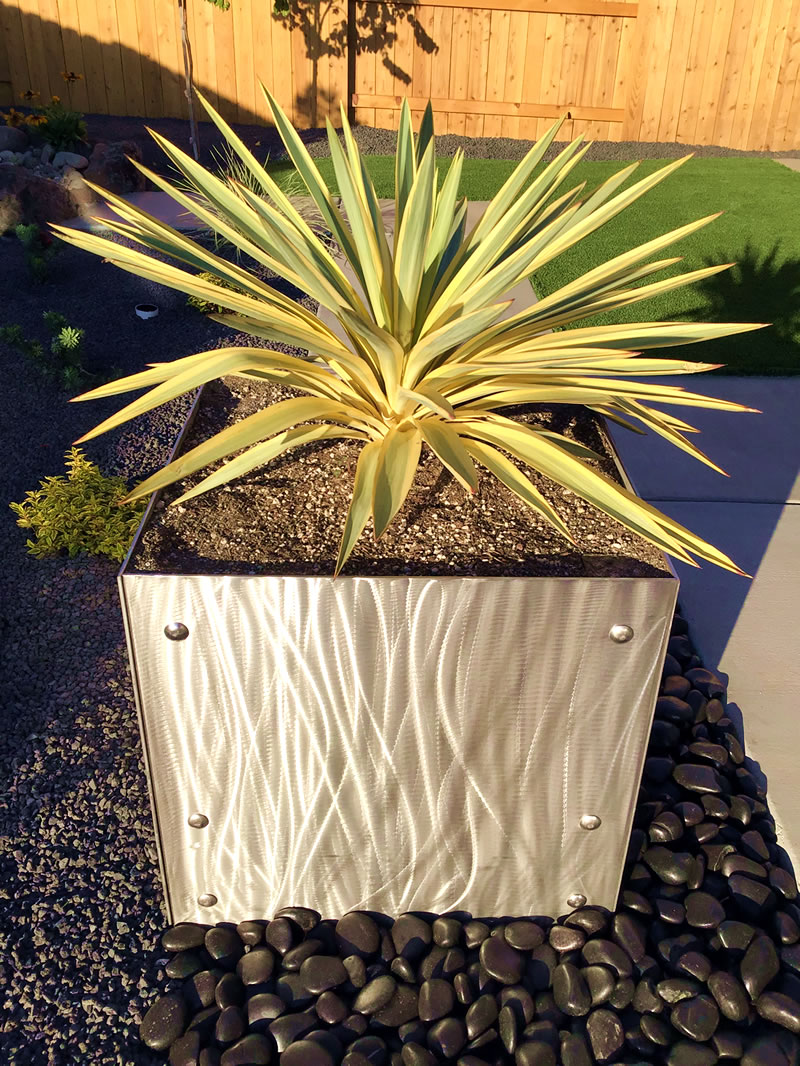
Yucca gloriosa ‘Bright Star’ (Spanish Dagger)
This is a 2 by 2-foot stainless steel container built and etched by my husband. Here, both plant and container are "co-stars." Each stands out and compliments the other perfectly. There are two of these matching plants and containers in a backyard landscape I recently finished.
I don't really like seeing the soil in the container. Since I don't want to add a plant to cover it, I might top it with black lava rock that will serve as mulch and give it a clean look.
(After a most beautiful water fountain is delivered and installed, I will feature this backyard project on my website.)
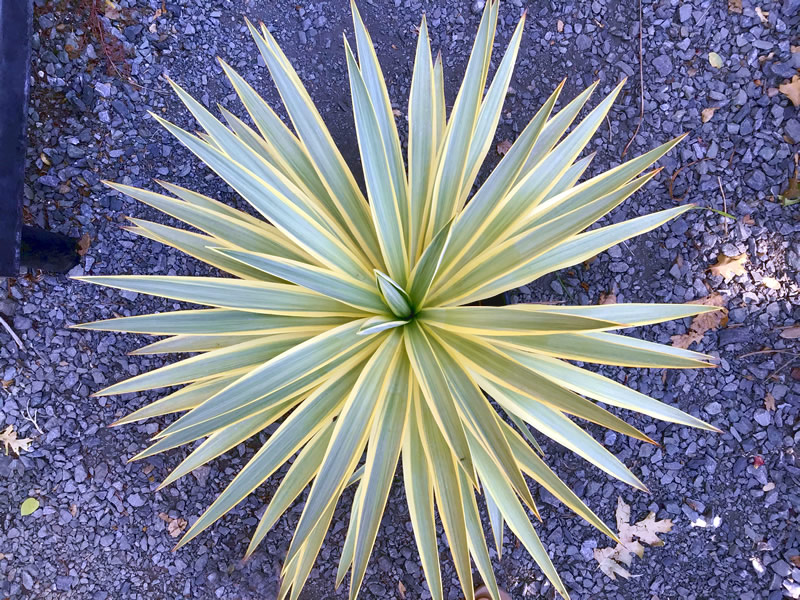
By the way, this Yucca is one of my favorite plants because it provides that WOW factor at a low price of $35. I stock up on these to use in future projects for myself and others.
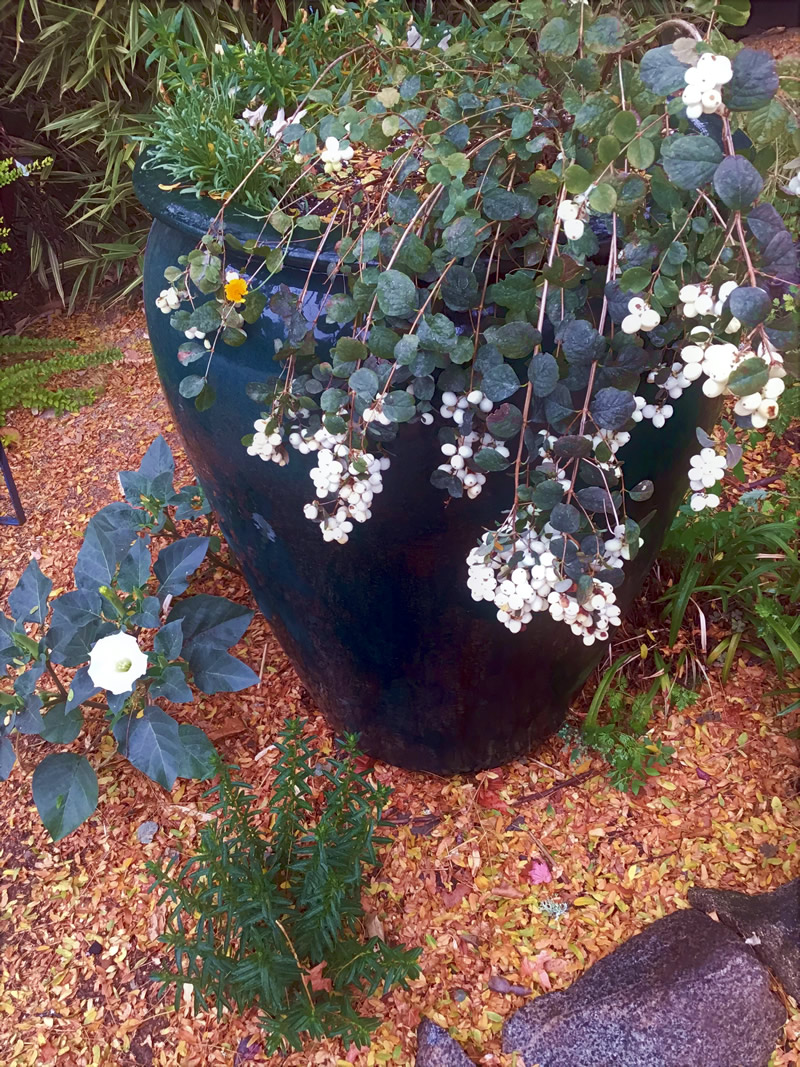
CONTAINER LEFT: Mimulus ‘Jelly Beans Vanilla Snow’ (Monkeyflower). MIDDLE: Hymenoxys scaposa
RIGHT: Symphorcarpos x doorenbosii (First Editions Snowberry Galaxy)
TOO TALL FOR PHOTO: Gardenia Patio Tree
BELOW CONTAINER: Datura wrightii ‘Sacred Datura’, Trichostema lanatum x purpusii (Hybrid Woolly Blue Curls)
I’ve had my eye on this deep green container for over a year and have tried to put it in a design for clients. But none of them likes green. So I bought it for myself!
It is huge, standing at a nice 36-inches tall and 30 wide. To make instant impact, I knew it would require at least 2 plants at a 2 or 3-gallon size. In my holding area I had 3 plants the right size, all with white blossoms. Since white compliments deep green, I went with it! Then I threw in the Hymenoxys scaposa with yellow flowers just cuz.
This container sits at an entrance to a garden pathway. To the left is an old wrought iron gate with peeling blue paint.
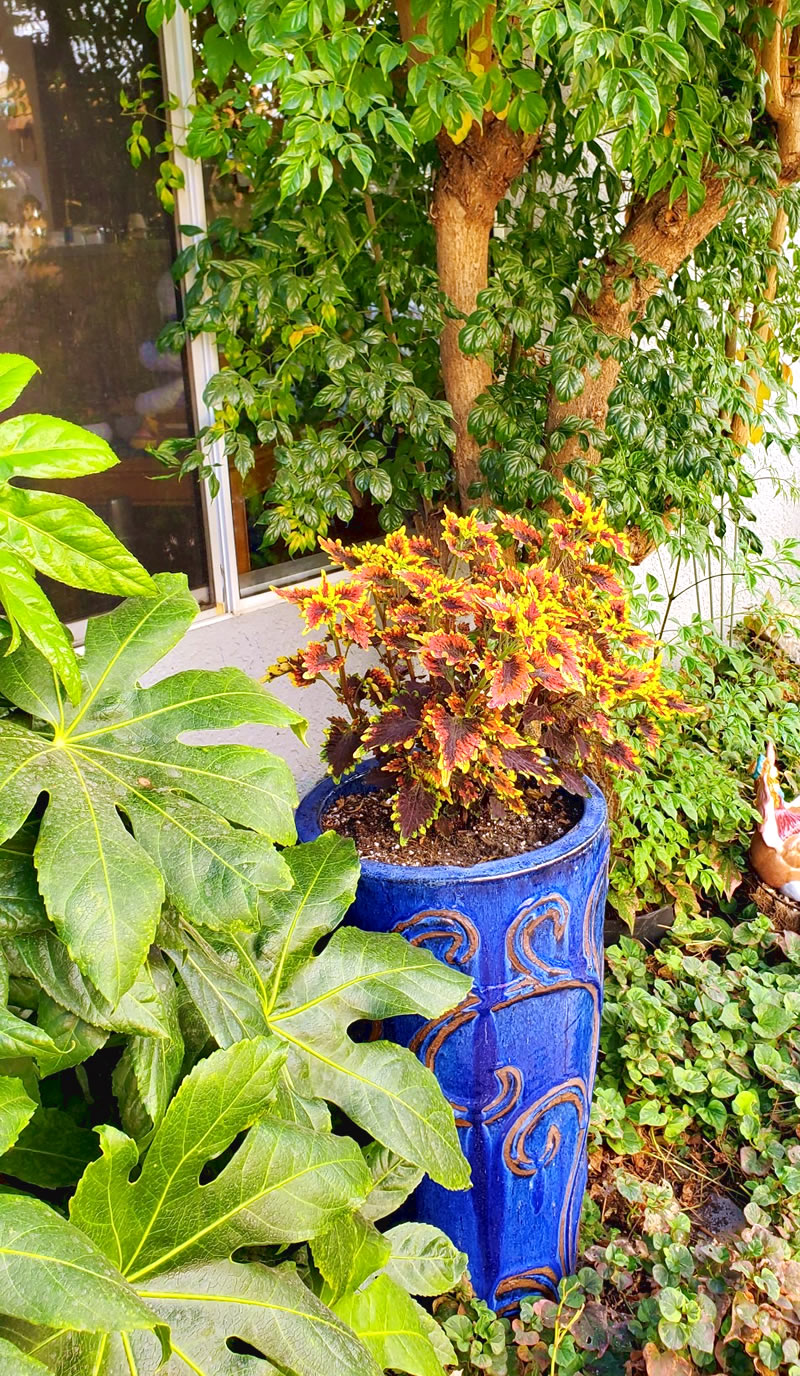
Coleus (unknown variety). By Aunt Patti.
If contrasting colors work well for plants and containers, matching colors work as well. Here, Aunt Patti has chosen wisely, and she probably didn't even know it! (But really, when we don’t know what we're doing half the time, sometimes we create the most stunning displays!)
The trim color of the container's curlicues matches the Coleus and the bark of the tree. Nicely done, Aunt Patti!
Sometimes containers speak to me and tell me what plant to put in. (Yes, you can call me The Container Whisperer.)
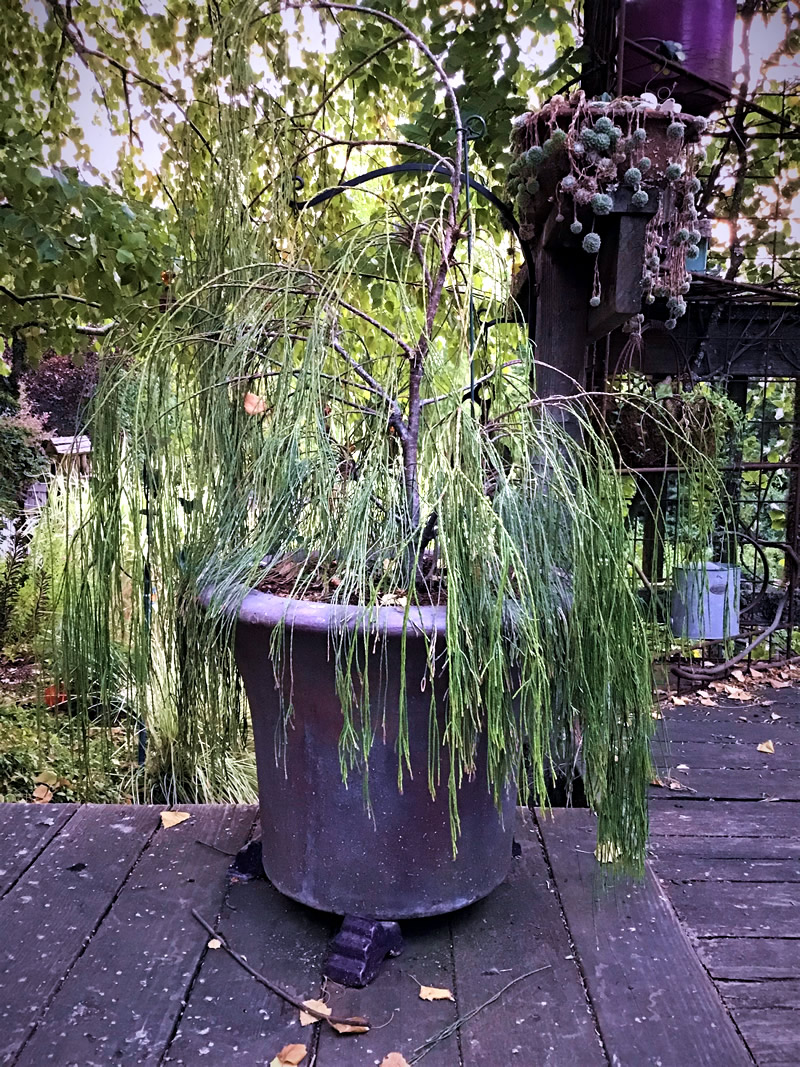
Thuja plicata ‘Whipcord’ (Whipcord Dwarf Western Red Cedar) grown as a standard patio tree.
I bought this super heavy, purplish concrete container at Pottery World in Rocklin. But I sat on it (not literally) for half-a-year because it told me right off that whatever plant went in it had to be light and airy. When I came across this Whipcord Dwarf Cedar, I knew it was the plant the container wanted. Since then, I have put several Whipcords with varying growth patterns in containers.
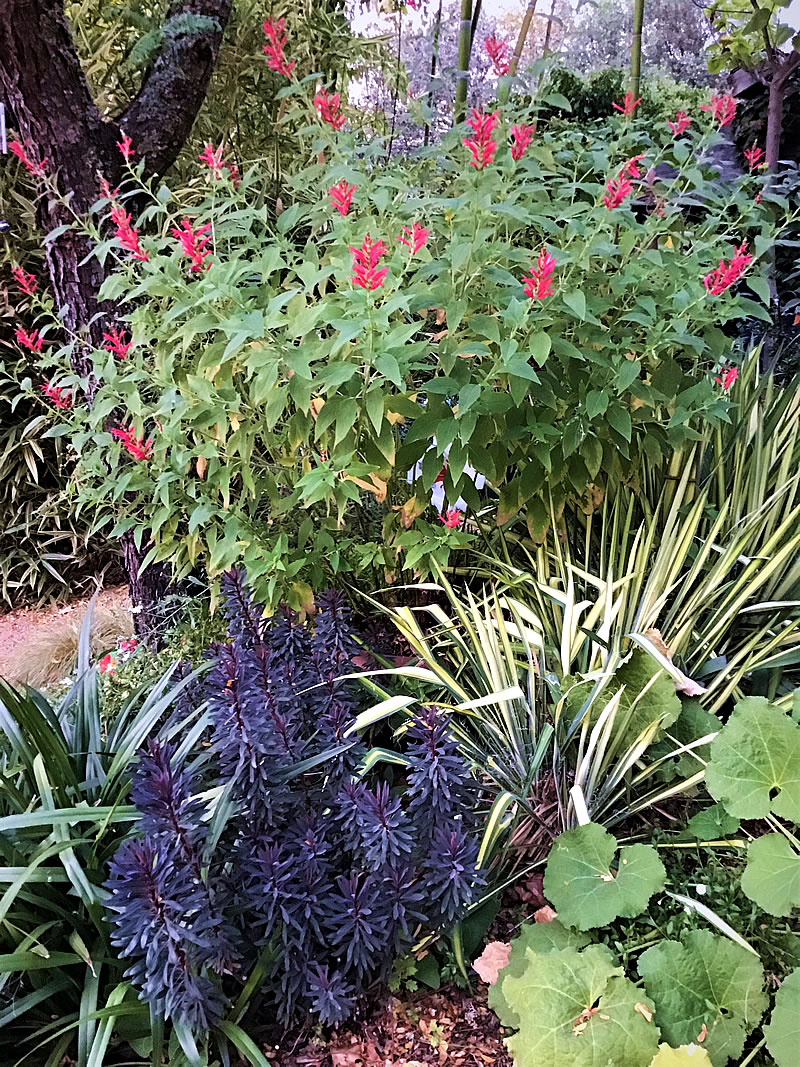
Salvia splendens (Scarlet Sage) placed in container for height.
Euphorbia ‘Blackbird’ and Yucca filamentosa ‘Golden Sword’ at forefront in the ground.
Above is an example of plantings designed to hide a container. I have put many containers in gardens in order to add height. But when a container is not up to my standards for viewing, I don't want it to show. Sometimes on purpose I'll use a cheap container that otherwise accomplishes my goals. Or perhaps it's a nice container but sitting on a boulder I want to hide.
Another way I roll is to cluster containers of the same color together. Don't be one of those people who scatter any color of containers around. Quite honestly, it looks a mess—and with no place for my eyes to land.
Instead, do this:
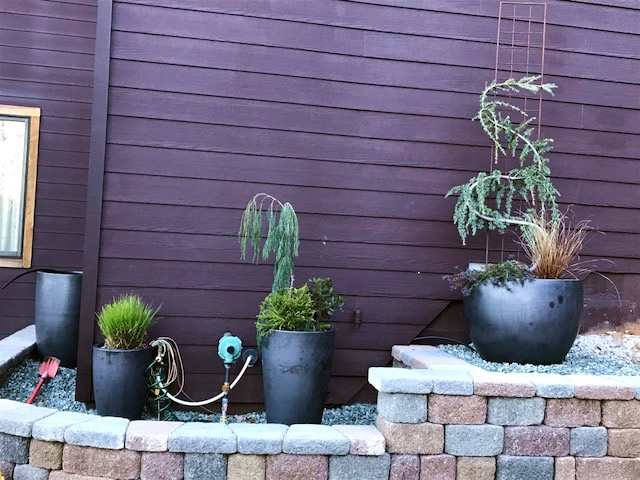
BEFORE: Grey pots, 2017, under design construction.

AFTER, left to right: Euphorbia characias 'Silver Swan', Lomandra longifolia 'Platinum Beauty'
Pinus strobus 'Angel Falls', Yucca gloriosa 'Bright Star', Carex buchananii 'Red Rooster'
Lomandra longifolia 'Platinum Beauty', Arbutus unedo 'Oktoberfest', Cedrus atlantica 'Glauca Pendula'
Ceanothus of the 'I Can't Remember Variety' but has beautiful dark purple/blue flowers.
Love, love, love this cluster. Don’t you? Pewter is one of my favorite container colors. It works with any kind of design while allowing the plants to shine.
My husband built the retaining wall out of Stonewall II Positano. It looks great and also hides the propane connection, hose bib and hose. I am not a fan of seeing stuff in my gardens except plants and containers.
Which brings up another of my #1 pet peeves: bad hoses and nozzles. For all my landscape installs, I bring my own personal hose and nozzle. It's rare that a client has a decent hose and nozzle, and yes, I am THAT picky.
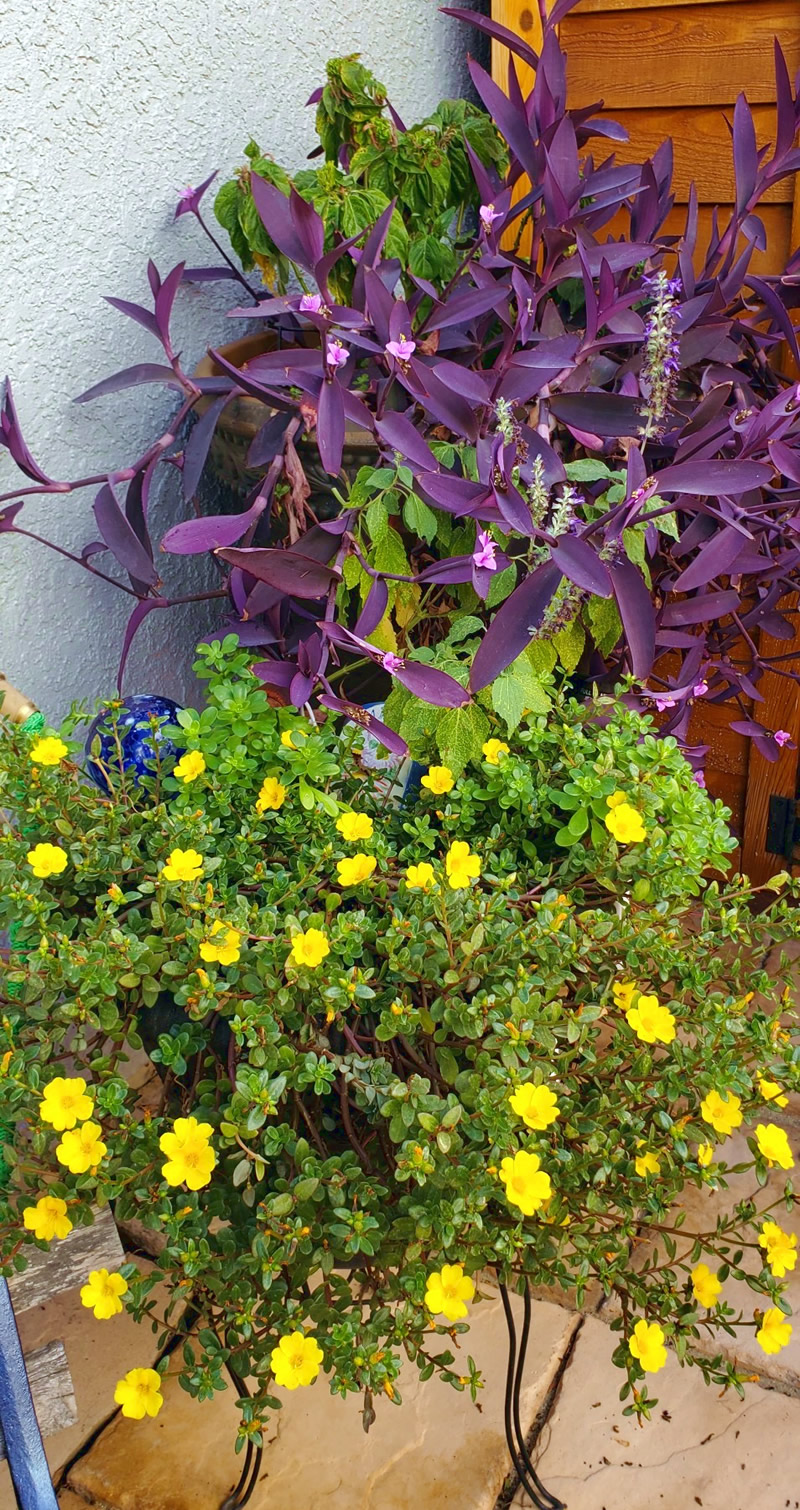
Tradescantia pallida 'Purple Heart' (Purple Heart Wandering Jew), Portulaca grandiflora. By Aunt Patti.
Aunt Patti did another fabulous job, using 2 containers and 2 contrasting-color plants which really gives this design that WOW factor we all look for.
Okay, Readers....fair warning! Blog post 18 will be "Containers, Part 3: How To."
So chop-chop! Get those containers and plants ready. We're going to create some BEAUTY together for a world that needs all the beauty we can give it!
Photos courtesy Sheri Lynn Burke and Aunt Patti. All rights reserved.

